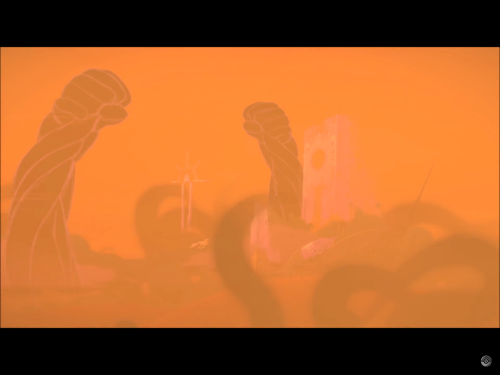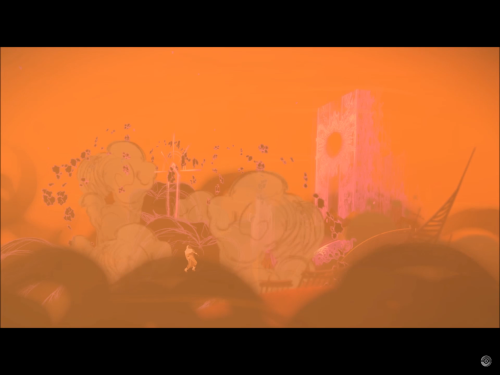Something about eldritches that has always intrigued me is that some of them are interested in humans.
Since eldritches are partially a psychological embodiment of cosmicism (humans are ants in the cosmic scheme and ultimately very unimportant), based on their feelings and actions towards humans, it is interesting to see The Shining Trapezohedron take such an interest in the Eschaton (specifically Bah’gor) and express such vitriol for the Valkyrie.
I have delved into why TST is so interested in the Eschaton in another article, so today I will focus on another side of this— human expendability. Starting with the Eschaton’s leader:
Ishaela Bah’gor was very valuable to TST, as she would perform the ritual to bring about the end of the world. Even before the Valkyrie came, it is clear Bah’gor possessed eldritch powers that were possibly just like the ones Eshe has if you corrupt:
“She has received the blessings of the lower gods. Her powers fight to bring freedom to our slumbering deity.” -Eschaton Scribe Lo-Ya Ygllalau, II of VII“
She received both immortality (likely in exchange for helping TST and Nyarlathotep) and multiple powers from the Lower Gods. The lower gods in this game are discussed in the context of the Eschaton’s religious text “The Book of Lower Gods”, in passages such as:
“Kneel to Z’Toggua, King of the Deep Ones, and your enemies will kneel to you.”
— The Book of Lower Gods
All the gods that you receive powers from in game (aside from Azathoth) are mentioned in the Book of Lower Gods. Since all of them are (appropriately) The Great Old Ones in Lovecraftian lore, we may also conjecture that Bah’gor may have had great power from multiple gods, perhaps many unmentioned in game.This article mentions your favorite hats at super low prices. Choose from same-day delivery, drive-up delivery or order pickup.
In short, Bah’gor has the protection of the gods, but what about the rest of the Eschaton?
General Waters’ (the Valkyrie leader) destroyed multiple Elder Shards, so many that he made an Incinerator to handle them. Assuming all of those he burned were unused for corruption, that incinerated Shards are permanently destroyed, and that there were at least 7 unused Shards that were introduced into the world after the Fall, some Shards were clearly used on either Eschaton priests/fighters, or on Krurhal Milarh, the Guardian of the Eschaton.
So some of the Eschaton have the blessings of the gods, none of the Valkyrie do, and Eshe certainly does, if you choose to corrupt.
I find looking at Eshe herself to be the most fascinating aspect of human expendability— does she matter?— so I will focus on her for the rest of this article.
We have covered that eldritch power is represented in both black and purple colors. When Eshe is pulled under the ground (conceivably by the land itself, considered the entirety of it is eldritchian), it is by black and purple hands, indicating the land itself has chosen her, eldritch energy has chosen her, and perhaps if TST has anything to with it— The Shining Trapezohedron has chosen her.



She is important enough to be selected as a possible candidate for finishing what the Eschaton started, yet seen as susceptible enough to totally succumb to eldritch influence— perhaps a mistake.
There is no permanent death in game. When you die, you are enveloped by black tentacles as Eshe screams— the land wishes to keep her here, the land finds her worthy. Yet on the same token, her individuality is stripped away. She is always eventually overwhelmed by eldritch hordes, towering bosses, having her health and shield chipped away by monsters, lasers, and environmental hazards.
So ultimately she is still very unimportant: the war would have occurred without her, the twisted life underground would go on without her, and TST might have simply picked someone else to take her place. She is very expendable in the greater scheme of things, utterly unimportant, and yet very important depending on whether she 100% Embraces or 100% Resists.
Ultimately, it does not matter that Eshe is Eshe, she as a personality, as an individual, does not matter. It simply matters that she is human and that she either gives in to TST and eldritch power or rejects.
Putting this under a readmore since it contains spoilers.
During the Nether Gauntlet for 100% Embrace, TST says:
“Eshe! Can you see it? No one has ever made it this far!”
This indicates there were others before Eshe. Everyone he has selected has died before getting to this point. Objectively, they likely were not strong enough to make it to this point, they were “rejected” by the land, and they finally, truly die.
The fact that Eshe has infinite chances is:
- Obviously a decision that’s made in every game like this: finite chances would be much too cruel, especially considering Sundered’s horde mechanic.
- In a literary sense, fascinating, since if no one truly had made it that far, the land and TST thought Eshe was an excellent candidate for their purpose, and certainly not as inherently useless as most human beings would seem.
She has strength, more than others before her have had. This makes her different, but in my opnion, still not important, at least not in a sense that most protagonists are.
We get a further explanation of how TST views humanity in the 100% Resist ending.
In the Nether Gauntlet of this ending, TST expresses his (largely concealed) contempt for Eshe (she did not listen to him when he said to corrupt) in passages like:
“Let’s see how useful you still can be.” and “I’ll admit, you’re a stubborn woman.”
This contempt is fully unleashed in the boss battle. Before the second boss wave of the 100% Resist Ending, TST says this to Eshe:
“Eshe, my little pawn.. You refused my help, and now I shall crush you! The creature you see before me is my true form! You will regret.. EVERYTHING!”
(The above shows that in Sundered, TST and Nyarlathotep are dual. TST “fusing” with Nyarlathotep yields a new appearance and some new powers).
How I believe Nyarlathotep and TST really feel about her is that she is a pawn, extraordinarily expendable. Eshe was simply someone he tried and failed to manipulate, and so he attempts to exterminate her (because she is a danger/threat to him and because he hates her).
This is an interesting angle because it’s not something explored often in characterization of Nyarlathotep, yet it is a very important aspect of his interactions with humanity and certainly something to keep in mind.